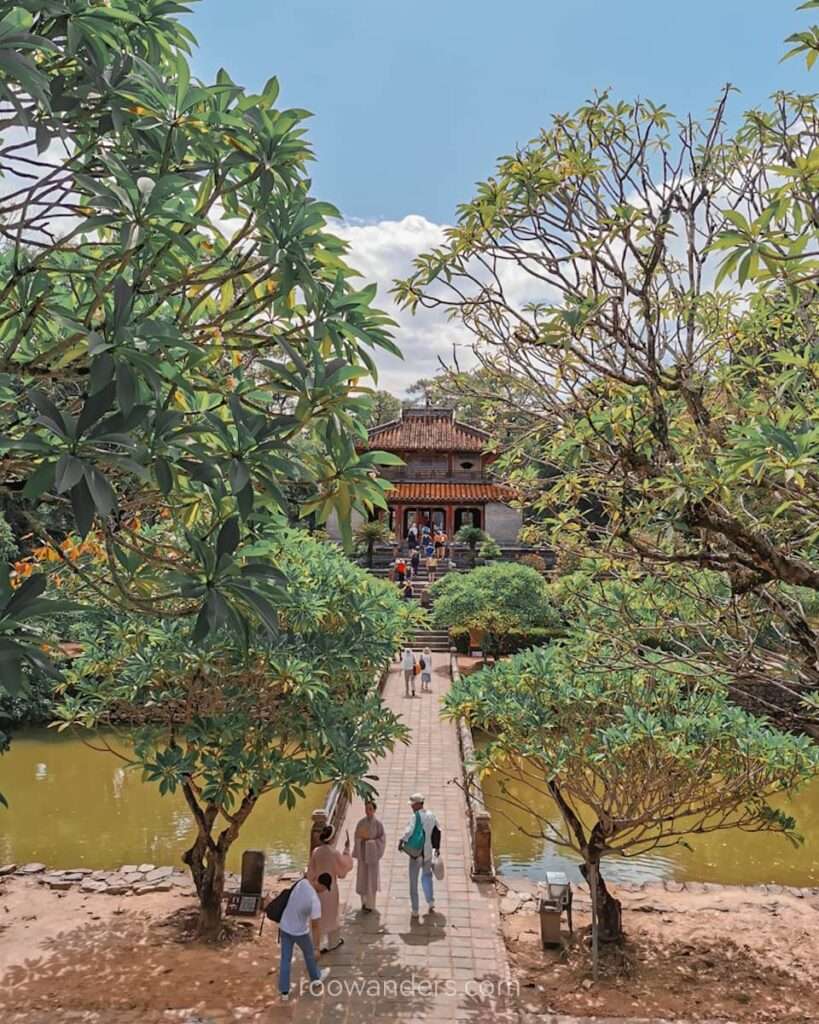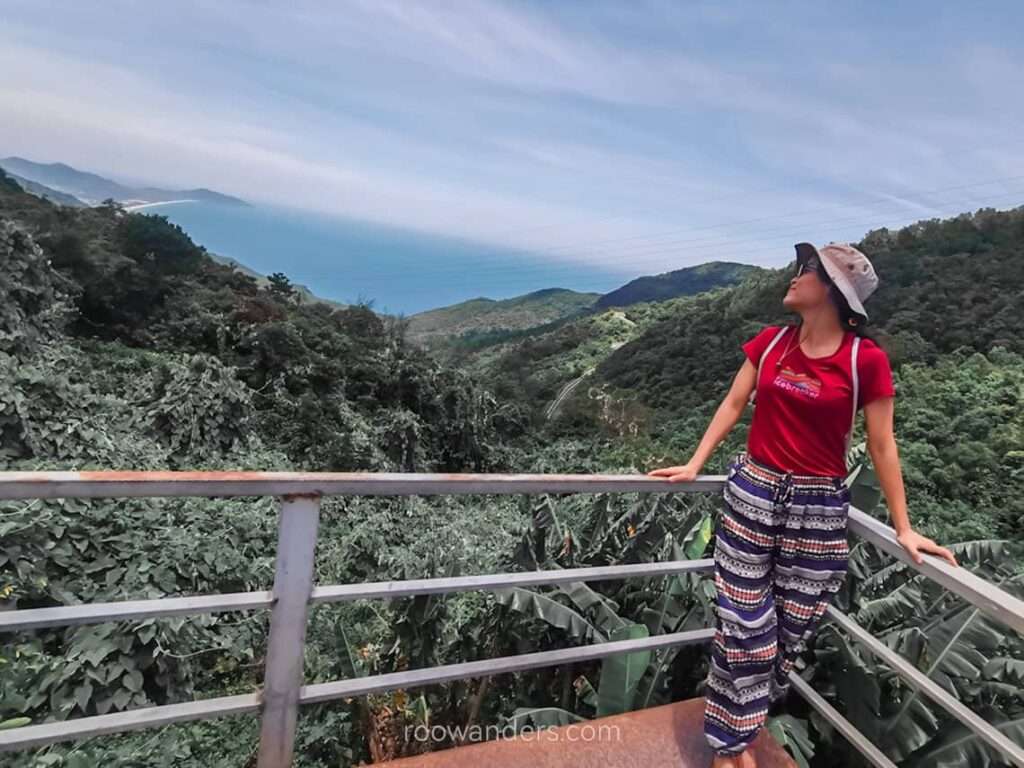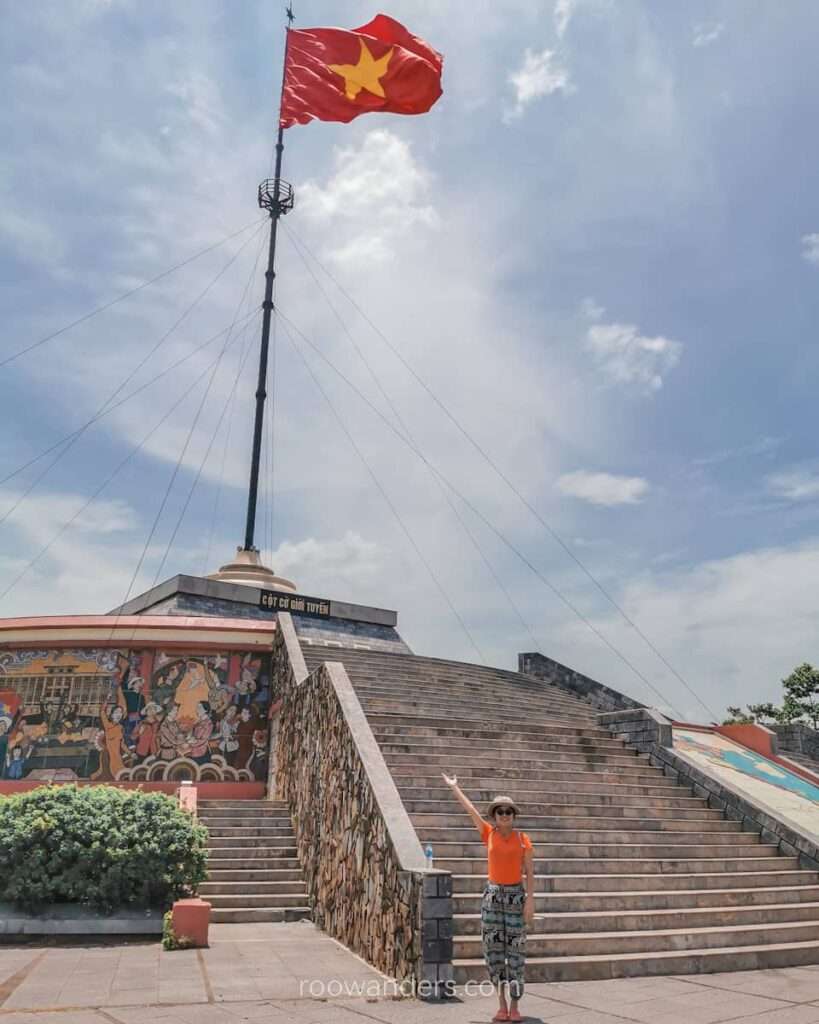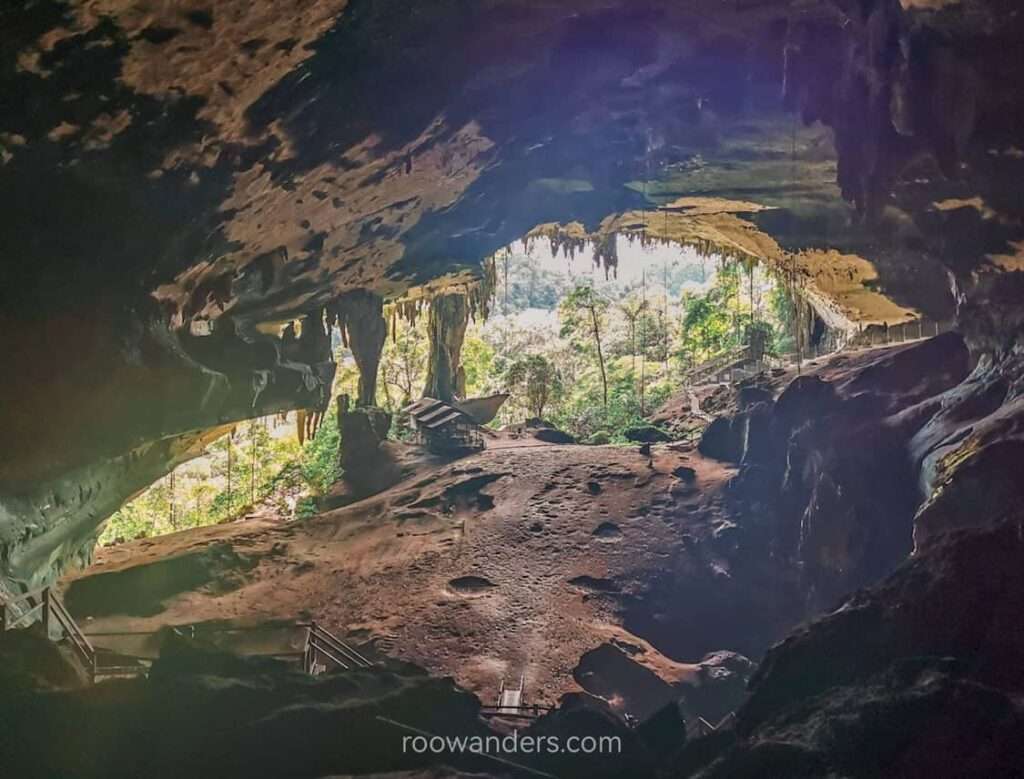
A Trip to the Marble Mountains of Da Nang
Visiting the Marble Mountains was part of my overland trip from Hue to Hoi An on a sightseeing bus over the beautiful mountainous Hai Van Pass.
These five prominent peaks of Da Nang are attractions for visitors to visit because of their caves, pagodas, and temples, as well as the combination of temples and pagodas in caves.
Thinking if it’s worth visiting the Marble Mountains when you’re already in Da Nang or Hoi An? This post shall show you why you should. Come on…it’s so close to Da Nang already!

I visited the Marble Mountains as part of my 2-week itinerary in Vietnam from Hanoi, with the highlight being Hang Son Doong in Aug 2023. This post contains affiliate links that cost nothing to you but support my blog! It may also be updated periodically. Cheers!
Brief Background of the Marble Mountains
The Marble Mountains of Da Nang are five distinct limestone pinnacles jutting out from the relatively flat terrain of the coastal city, similar to the pointy peaks of Vang Vieng, Laos.
Imagine how the mountains would have looked in ancient times with considerably fewer skyscrapers and buildings blocking their magnificence!
Those five fingers would have been a spectacular vista to the people then, who would spin off the miracles/ myths/ legends surrounding the mountains, like this Cham legend that relates the 5 mountains to the 5 shards from a giant hatched egg of a dragon.
Emperor Minh Mang – his grand tomb could be found in the ancient capital Hue – was inspired by the mountains. The Emperor was responsible for calling the peaks the Marble Mountains or Ngu Hanh Son in 1825, with each peak named after the elements of Eastern philosophy – Metal (Kim Son), Wood (Moc Son), Fire (Hoa Son), Earth (Tho Son), and Water (Thuy Son).
Of the five mountains, only the water mountain or Thuy Son is the biggest and grandest peak filled with attractions and where visitors go.
The other four do not seem to have any pagodas or landmarks worth mentioning but are free to visit. You may discover ruins in the jungly peaks.

Getting to the Marble Mountains
It’s easy to travel to the Marble Mountains if coming from Da Nang. Ride-hailing services like Grab or taxi could bring you there within 15 minutes from Da Nang beachfront, provided there’s no traffic jam.
Da Nang has an international airport and a train station. Book your best flights from Skyscanner, and your bus and train tickets to Da Nang from 12Go or BaoLau.
Alternatively, if you know how to ride a motorbike or scooter, you could cover that distance and check out the other four peaks.
Public buses plying the streets of Da Nang is another option. Google Maps will tell you how. But the journey takes three or four times as long and may not be feasible unless you’re on a shoestring budget or want to experience taking a public bus ride in Da Nang.
The same should apply if you’re travelling from Hoi An. Aside from hailing a ride or going there yourself, you could also join a guided tour for a return trip to and fro your hotel, and get the benefits of anecdotes or story-telling from the guide.
I’ve never had the good fortune to try any of the methods above and visit the Marble Mountains as part of a sightseeing bus trip from Hue to Hoi An. 😘 It was a day well spent!

Best Time to Visit
Anytime the water mountain is open is a good time to visit. Thuy Son is open from 7 AM to 5 PM.
But the best time to visit in the day has to be in the early morning just as it opens – steer clear of the crowd coming via tour buses and those who couldn’t get up that early!
The Marble Mountains are located in Central Vietnam. With that, there are three main seasons to watch out for – the optimal dry and cool season (Feb – Apr), still doable dry and hot season (May – Aug), and slippery as hell rainy season (Sep – Nov). The period of Dec – Jan might still see some rain, but it is also the peak holiday season.
Several tours or sites advertise visiting the Marble Mountains as hiking the mountains – but for me, it’s more stair-climbing than hiking. Since we’re talking about marble steps that are already slippery from all the wear and tear, be extra cautious when it rains!
Also, take note of the Tet holiday, which is the Vietnamese New Year in January or February. Locals might head to the shrines and temples of the Marble Mountains to pray.

What to see in the Marble Mountains
There are five peaks, but only the water mountain or Thuy Son is where all the excitement and attractions are.
Here’s what I saw in Thuy Son, one of the stops on the sightseeing bus trip from Hue to Hoi An.
Taking the lift
We purchased the tickets for 40k dong per person and another 15k dong to take the lift to the top of Thuy Son.
What? You cheater! I thought you were a hiker. You took the lift?
Hear me out!
If I’m on a DIY trip, I’d gladly climb the marble steps to reach the marble top since I know I can. But when you’re on a tour with a dozen others and only an hour to explore Thuy Son, this is what it is. Instead of spending maybe 5 – 10 mins climbing the 150+ tall steps, we queued and took the 20 s lift with glass walls – ooh fancy – to the top.

Map of Attractions
There are 15 marked attractions according to the map by the ticketing booth, but only two spots appeal to me – the highest peak (8) and Huyen Khong Cave (10).

The highest peak
There’s a highest spot! And the hiker in me wants to reach the top and see what’s up there.
We bulldozed through the marble walkway, bypassing Linh Ung Pagoda (2) to point (8), up and down marble steps and through relaxation corners, but were distracted by point (6) Linh Nham Cave.
Linh Nham Cave has a small entrance into a cave with a coloured Buddha statue. There’s an even narrower and steeper corridor that opens up to a part of a fallen cave with an opening to the sky and bats sleeping within.



At the end of this fallen cave is another series of rocks to a small opening that I did not climb to inspect, but my travel buddy did.
He emerged to the highest peak (spot 8) while I took the long route since I wasn’t confident climbing those rocks with my jandals and there were spider webs and icky debris.
Whatever the route you took – the formal or informal one – the view at the top is stellar!
It would be even more exceptional if not for the tall, ugly, and clunky building that marred the visage of a white coastline and Cham Islands at the end of the blue horizon.
Going up to point (8) was okay, but getting down via the same path of slippery marble boulders was tricky.

Huyen Khong Cave
With the highest point done, we headed to Huyen Khong Cave just a short walk from where we were.
Since I was already desensitised from the caves of Phong Nha and the temples/ shrines/ pagodas of ancient capital Hue, when I say Huyen Khong Cave is impressive, you must take my word for it.
What welcomed us after walking through a pair of ruined-like stone pillars and the gate was the Goddess of Mercy with a bit of green moss on her dress. The Goddess stood within a hole in the cave with an altar at her feet.

We passed the Goddess and had our eyes on a stone image of a peaceful Buddha seated directly opposite us. Underneath the stone Buddha is a massive space with a few altars, shrines and even a small temple. The Buddha might have been carved directly from a giant boulder in the cave.
As we descended the evenly spaced stone steps, we were greeted by four soldiers standing guard on our side. The soldiers from heaven flank our left, while the red-faced soldiers from hell flank our right.

Since the cave was partly lit by the holes from the top, if the timing of your visit is right, you could get gorgeous sunbeams streaming through and landing on the Buddha as the sun inches across the opening!

Linh Ung Pagoda
If you haven’t gotten a Buddha/ temple/ shrine fatigue in your Vietnam holiday thus far, then maybe you’d enjoy the view of a 10 m pristine white big Buddha at Linh Ung Pagoda, and the 7-tiered pagoda Xa Loi.
Both are located next to the elevator or steps up from the ticketing booth at Gate 2.

Am Phu Cave
Am Phu Cave, or the Hell Cave (15), is another highlight at Thuy Son located on the ground level near the car park.

I didn’t visit Am Phu since it costs another 20k dong, plus I was getting a little weary of visiting caves since I recently spent 4 days in the world’s largest cave, Hang Son Doong.
Huyen Khong Cave was remarkable already. Am Phu was designed to be the opposite of Huyen Khong, with dioramas of sinned souls being tortured and punished in their afterlife, like those in the 18 chambers of hell in Haw Par Villa of Singapore.
While visiting the 302 m deep and 40 – 50 m tall cave may be impressive, why would I end my excellent Marble Mountains tour with harrowing images of wrong-doers being punished in their afterlife?
So, we left the place and rejoined the group on the big bus to the beautiful coastal town of Hoi An! Ahem, you should read my Hoi An post, I love Hoi An! ❤️

Conclusion/ Rambles
Visiting Huyen Khong Cave in the Marble Mountains reminded me of my previous visits to other similarly huge caves with buildings/ statues inside like Tham Khao Luang in Phetchaburi of Thailand, and Gua Niah or Niah Cave of Miri in Malaysia.
The caves in Laos are smaller, but they too are hidden with several Buddha statues. You could find palm-sized buddhas hidden in the nooks and crannies of the caves in Vang Vieng!
In all, the Marble Mountains, especially the caves, are worth a visit if you’re already in Da Nang or Hoi An. Dedicate at least an hour, preferably two in the morning to take a leisurely stroll within this limestone wonderland.








